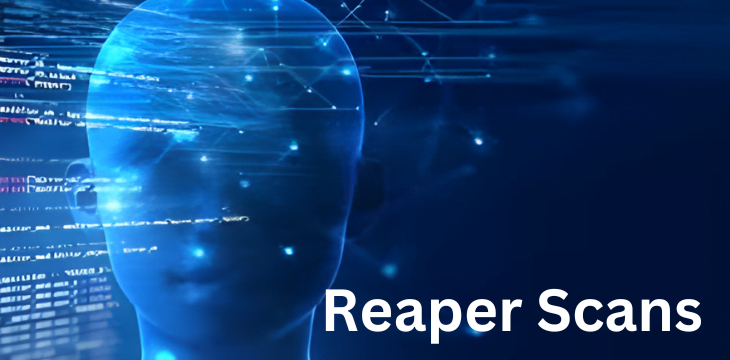Discover the power of reaper scans in identifying cybersecurity threats. Learn how these scans safeguard your digital assets and enhance your online security.
Table Of Contents
Introduction
In today’s digital landscape, where technology reigns supreme, safeguarding our digital assets is paramount. Cyber threats loom large, but so do the tools to combat them. One such tool gaining traction is the reaper scan. In this comprehensive guide, we delve deep into the world of reaper scans, uncovering their efficacy in identifying and mitigating cybersecurity threats.
Understanding Reaper Scans
What Are Reaper Scans?
Reaper scans, also known as active reconnaissance scans, are proactive measures taken to identify vulnerabilities within a network or system. These scans simulate potential cyber attacks, allowing organizations to fortify their defenses before malicious actors strike.
The Mechanics Behind Reaper Scans
Reaper scan operate by systematically probing networks, seeking out weaknesses such as open ports, misconfigured devices, and outdated software. By employing various scanning techniques, including SYN scans and UDP scans, reaper scan provide a comprehensive assessment of an organization’s security posture.
Importance of Regular Reaper Scans
Regular reaper scans are crucial for staying one step ahead of cyber threats. By conducting these scans at predetermined intervals, organizations can detect emerging vulnerabilities and address them promptly, reducing the likelihood of successful cyber attacks.
Benefits of Reaper Scans
Proactive Threat Detection
Reaper scan empower organizations to identify potential threats before they materialize into full-blown attacks. By proactively scanning their networks, organizations can plug security gaps and thwart cybercriminals’ attempts to exploit vulnerabilities.
Enhanced Security Posture
By conducting regular reaper scan, organizations bolster their security posture, making it increasingly difficult for cyber attackers to penetrate their defenses. This proactive approach not only mitigates risks but also instills confidence among stakeholders.
Cost Savings
Investing in reaper scans can yield substantial cost savings in the long run. By preemptively identifying vulnerabilities, organizations avoid the hefty financial implications associated with data breaches, regulatory fines, and reputational damage.
Implementing Reaper Scans
Choosing the Right Tools
Selecting the appropriate tools for conducting reaper scans is paramount. From open-source solutions like Nmap to commercial offerings such as Nessus, organizations must evaluate their specific requirements and choose a toolset that aligns with their objectives.
Conducting Comprehensive Scans
To derive maximum value from reaper scans, organizations must conduct comprehensive scans that encompass all facets of their digital infrastructure. This includes internal and external network scans, as well as assessments of cloud-based resources and IoT devices.
Interpreting Scan Results
Interpreting reaper scan results requires a nuanced understanding of cybersecurity principles. Organizations must prioritize vulnerabilities based on their severity and likelihood of exploitation, enabling them to allocate resources effectively and remediate critical issues promptly.
FAQs
What is the frequency of conducting reaper scan?
Reaper scan should ideally be conducted at regular intervals, with the frequency determined by factors such as the organization’s risk tolerance, industry regulations, and evolving threat landscape.
Are reaper scan legal?
Yes, reaper scan are legal when conducted with proper authorization. Organizations must ensure compliance with relevant laws and regulations, obtain consent from stakeholders, and adhere to ethical guidelines.
Can reaper scan disrupt normal network operations?
While reaper scan are designed to minimize disruptions, they can occasionally impact network performance, especially if conducted during peak hours. Organizations should schedule scans during off-peak periods to mitigate potential disruptions.
How do reaper scan differ from vulnerability assessments?
Reaper scan focus on identifying vulnerabilities within a network or system, whereas vulnerability assessments involve a more comprehensive analysis of security controls, including policies, procedures, and configurations.
Do reaper scan replace the need for other cybersecurity measures?
No, reaper scan complement existing cybersecurity measures but do not replace them entirely. Organizations should adopt a layered approach to cybersecurity, incorporating reaper scan alongside firewalls, intrusion detection systems, and endpoint protection solutions.
What should organizations do after conducting reaper scan?
After conducting reaper scan, organizations should prioritize and remediate identified vulnerabilities, update security policies and procedures, and implement proactive measures to prevent future security incidents.
Conclusion
In conclusion, reaper scans represent a potent weapon in the arsenal of cybersecurity professionals, enabling organizations to identify and mitigate vulnerabilities before they can be exploited by malicious actors. By embracing reaper scan as part of their cybersecurity strategy, organizations can bolster their defenses, safeguard their digital assets, and stay ahead of emerging threats.


